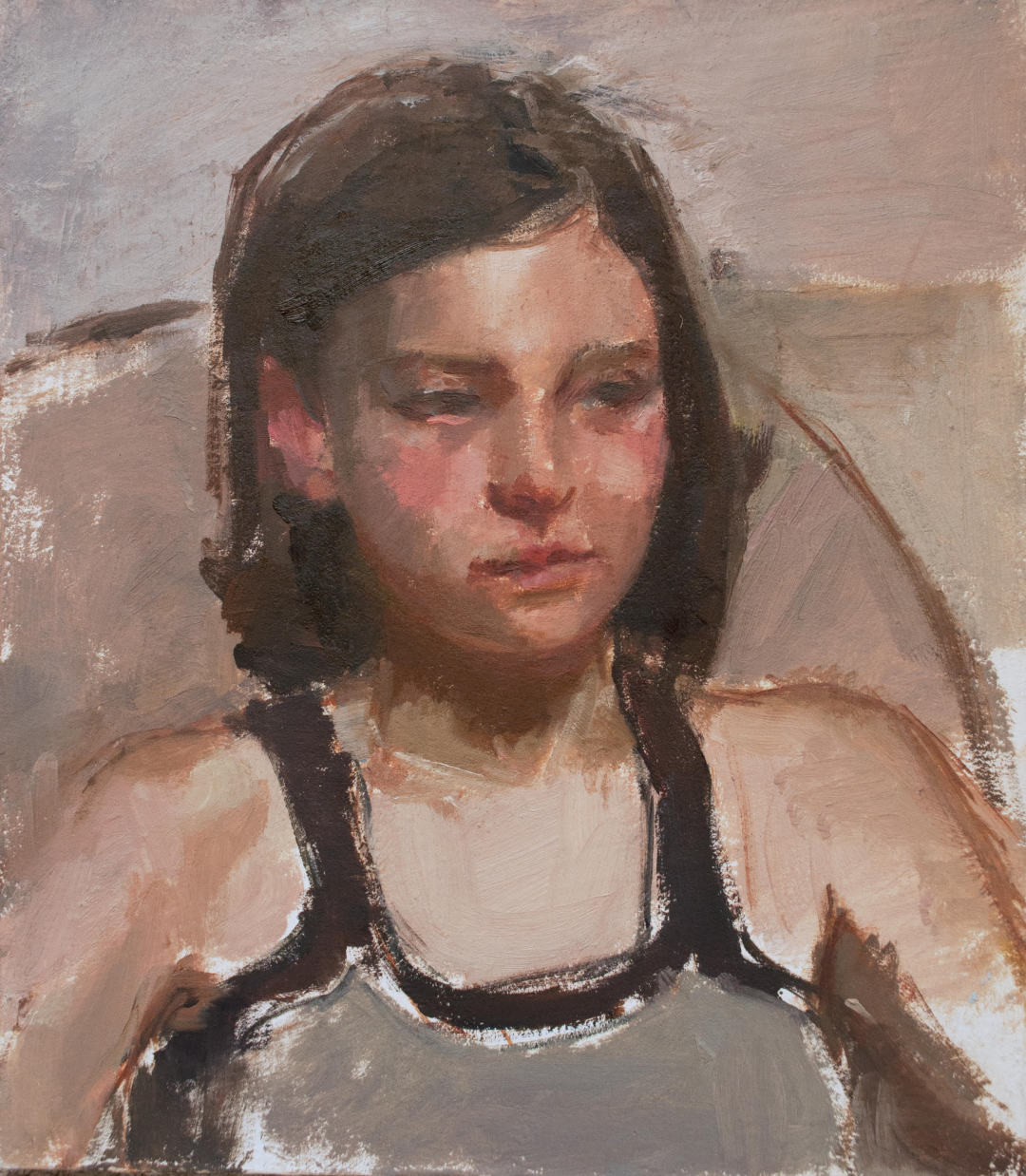Figurative Oil Painting: From Concept to Canvas - A Step-by-Step Strategy
Figurative Oil Painting: From Concept to Canvas - A Step-by-Step Strategy
Blog Article
The Function of Feeling and Expression in Metaphorical Oil Paint: A Comprehensive Evaluation of Subject Matter and Composition
The interplay of feeling and expression in figurative oil paint serves as an essential lens through which one can check out the complex relationship in between subject matter and composition. Artists harness numerous methods, from shade selection to brushstroke dynamics, to cultivate psychological resonance within their works.
Recognizing Emotion in Art
Emotion in art works as an effective conduit for expression, enabling musicians to share complex sensations via their work. In figurative oil paint, this psychological deepness is frequently represented via the depiction of the human figure, catching the subtleties of human experience. The selection of subject, color combination, and brushwork all add to the psychological vibration of a piece.
Artists frequently draw upon individual experiences, social concerns, or global themes to evoke feelings in the audience. A portrait may show susceptability, while a vibrant number in activity can represent liberty or chaos. These psychological strings attach the visitor to the art work, cultivating a discussion that goes beyond the aesthetic tool.
In addition, the interaction in between light and shadow can magnify emotional strength, leading the viewer's gaze and accentuating particular elements within the composition. Making use of appearance in oil paint additionally includes layers of complexity, inviting a tactile feedback that boosts the psychological experience. Generally, comprehending emotion in art is important for appreciating the subtleties that identify metaphorical oil painting, as it transforms plain depiction into a profound expedition of the human problem.
Crucial Element of Structure
In the realm of metaphorical oil paint, the structure functions as the underlying structure that organizes visual components and improves the emotional story. Crucial elements of composition consist of balance, contrast, focal factor, and rhythm, each adding to the overall influence of the artwork.
Equilibrium describes the distribution of aesthetic weight within the painting, which can be attained with asymmetrical or balanced plans. A well-balanced make-up offers security, enabling the audience to involve with the piece sympathetically - figurative oil painting. Contrast, on the various other hand, involves comparing different elements, such as light and dark or warm and great shades, to direct the visitor's eye and stimulate psychological responses
The focal point is vital, as it routes attention to the most significant part of the painting, typically highlighting the psychological core of the story. By masterfully incorporating these vital elements, artists can craft engaging and mentally powerful metaphorical oil paints that astound and involve their target market.
Topic and Its Influence
Topic plays a critical role in figurative oil painting, as it not only acts as the structure for the story yet additionally forms the visitor's analysis and psychological interaction with the artwork. The option of topic-- be it a solitary number, a group dynamic, or a thematic representation-- directly influences the psychological ambience shared to the target market.

For circumstances, portraits often stimulate personal links, revealing the details of human expression and personality, while scenes depicting public activities can develop a sense of belonging or fond memories. Furthermore, the social and historical context of the subject improves the audience's understanding, motivating deeper representations on societal standards, worths, and the human condition.
Various subjects also generate varying degrees of involvement; a dramatic dispute depicted through numbers in click here to find out more stress may generate sensations of anxiousness or empathy, while tranquil landscapes can conjure up tranquility and consideration. Eventually, the influence of topic in figurative oil paint is extensive, as it functions as a conduit for emotional resonance, assisting the visitor's response and interpretation, and promoting a link in between the art work and the viewer. This interplay is vital for the effective interaction of the musician's intent.
Strategies for Stimulating Sensations
The effectiveness of figurative oil painting in conveying emotions is considerably influenced by the methods utilized by the artist. Among one of the most essential methods is using color theory, where the strategic selection of hues can evoke specific emotional responses. Cozy shades, such as oranges and reds, usually evoke sensations of interest or aggressiveness, while cooler tones like blues and environment-friendlies have a tendency to evoke calmness or sadness.
Another essential strategy is the adjustment of light and shadow, referred to as chiaroscuro. This approach boosts the three-dimensionality of figures, producing significant contrasts that can magnify emotional depth. The positioning of light can lead audiences' emotions, highlighting particular components of the structure.
Brushwork additionally plays a crucial duty; loose, expressive strokes can convey energy and spontaneity, whereas smoother techniques may recommend tranquility or precision. The setup of topics within the composition can influence emotional influence. Close distance can suggest affection, while range may indicate isolation.
Ultimately, the combination of these techniques allows artists to craft stories that reverberate with the customer, transforming a simple aesthetic experience right into an evocative emotional trip. - figurative oil painting

Instance Research Studies of Significant Works
Examining notable jobs of figurative oil paint reveals how different strategies are utilized to evoke powerful emotions. One excellent situation is Edvard Munch's "The Scream," where the distorted figure article and swirling history share existential fear. Munch's use shade-- vivid oranges and deep blues-- heightens the emotional impact, showcasing just how combination selections can form customer experience.
Another considerable job is Pablo Picasso's "Les Demoiselles d'Avignon." Right here, bold brushstrokes and fragmented types show a turbulent emotional landscape, testing standard depictions of the female number. Picasso's innovative make-up not just captures the audience's attention but likewise welcomes reflection on styles of identity and sexuality.
Additionally, Frida Kahlo's "The Two Fridas" offers an emotional expedition of duality and self-identity. The different figures, connected by a common heart, exemplify Kahlo's emotional deepness and individual story. figurative oil painting. Her meticulous interest to detail and symbolic components offer to involve audiences on a natural degree
These instance studies underscore the extensive connection between emotion find more and composition in figurative oil painting, exposing how artists harness method to communicate complex feelings and stories that resonate across time and culture.

Verdict
Finally, the interaction of emotion and expression in figurative oil paint significantly improves the visitor's experience and interpretation of the art work. Through a cautious selection of subject and compositional strategies, musicians share extensive stories that reverberate on both universal and individual degrees. The application of shade brushwork, chiaroscuro, and theory further intensifies psychological deepness, changing each canvas right into a powerful reflection of the intricacies of the human experience.
In metaphorical oil painting, this psychological depth is commonly depicted via the representation of the human figure, recording the subtleties of human experience.Furthermore, the interaction in between light and darkness can amplify emotional intensity, assisting the visitor's stare and drawing attention to particular aspects within the structure. The usage of appearance in oil paint better adds layers of intricacy, inviting a tactile feedback that enhances the psychological experience.The focal point is critical, as it routes focus to the most significant part of the paint, often highlighting the emotional core of the narrative. Ultimately, the impact of subject issue in metaphorical oil paint is extensive, as it offers as a channel for emotional resonance, directing the audience's reaction and interpretation, and fostering a link in between the art work and the onlooker.
Report this page